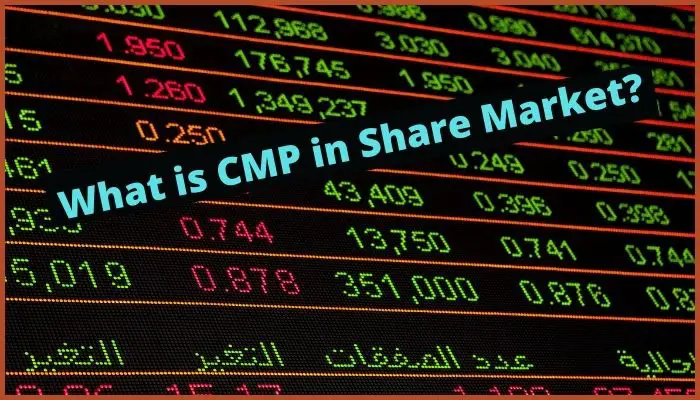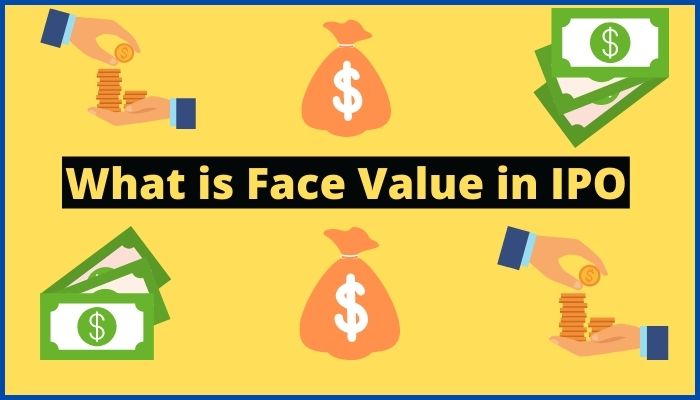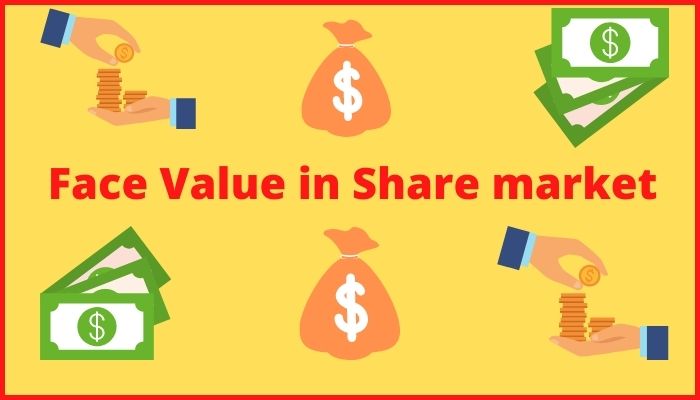A share market is a platform where investors can potentially earn a lot of money. Awareness of share market phrases is important while participating in the stocks. The first thing to comprehend is the face value in Share market. Let’s discuss it in detail with an example.
Table of Contents
What is Face Value In Share Market?
Face value is a financial word that refers to a security’s basic or cash value as indicated by its issuer. The face value of a share is the stock’s actual price, as shown on the registration.
In Bonds, It is the actual amount for the bondholder at maturity. “Par value” or perhaps “par” is a term used to describe the face value of bonds.
The fact about the face value is that it is permanent and never fluctuates.
Example:
Reliance shares have a face value of Rs. 10, yet their market price near around Rs. 2000 on NSE and BSE.
Usage of Face Value in Share market

The authorized capital a corporation is required to maintain is usually determined by the total face value of all of its equity securities. Only the above-and-beyond funds distributed to investors in the type of rewards like dividends, etc. These are major Example of uses of face Value:
-
Example of Stock Split
Firm Xyz’s stock price has increased to Rs 10,000. It has a ten-rupee face value. Many Indian retail investors will be unable to purchase a stock that costs Rs 10,000.
To increase the volatility of the share, the company may divide it into five parts. After the divide, the stocks’ face value will be Rs 2 and the stock pricing would be Rs 2,000.
-
Example of Dividend
When a corporation declares a dividend, the face value is used rather than the stock price. If a company’s stock is worth Rs 300 and its face value is Rs 10, it will pay a dividend of 200 percent of the face value, or Rs 20 per share.
What is the difference between face value and market value?
While a stock’s face value is obtained by the issuer, market price is determined by outside supply and demand factors. The cost that the market will accept is known as market value, and it might range dramatically from a stock’s original cost.

Face value Vs Market Price
| Face value | Market Value |
|---|---|
| Market conditions have no effect on it. | It fluctuates according to the market factors. Price fluctuations can occur because of changes in macroeconomic data, government actions, and global events. |
| The corporation determines the pricing. | The value at which shares are bought and sold on stock exchanges. Once trading begins, this will change. |
| It is the stock’s actual value at the point of registration. | It is the present stock market price as reported by the stock exchange. |
| It is impossible to calculate because the firm determines the face value. | Market value is extracted by dividing the firm ‘s entire market price by the overall quantity of stocks issued. |
Is it possible to change the face value of the shares?
Corporate actions, such as stock splits, can modify the face value of stocks. When a firm splits its equity, it divides the current equity into smaller units having a reduced face value.
Example
if a firm with a face value of Rs 10 per share announces a 1:5 stock split, it indicates that one current stock has been split into 5 shares, each having a face value of Rs 2. A stock split is a strategy for increasing liquidity and recognizing the actual valuation of a firm’s equity.
Other Related Terms to face value of share
Book Value:
Another term that is usually correlated to the face value and market value of stocks is book value. This basically refers to the value of the firm ‘s stocks on its books. It’s determined by multiplying the firm’s net worth (the difference among its assets and liabilities) by the quantity of stocks it has allocated.

Conclusion
It is a basic factor which you need to consider while buying a stock. Sometimes a face value in Share market plays an important role in increasing the market price especially while the company announces stock split.
This is all from our side regarding Face value in share market. Although, if you have any doubts about what is face value of share you can just comment below.
Other Interesting blogs related to maximum face value of share:
Difference between Nifty and Sensex
Financial Instruments in India
FAQ About face value of share
Face value is also known as
Face Value is also known as Par Value.
Face value of Share Formula?
Face value is decided by the company. There is no formula behind it.
Maximum face value share in India.
Maximum Share face value in India is 100. The Yamuna Syndicate Ltd is an example of it.
Face Value of share is called
Face Value of share is called par value.
Highest face value share list
The Yamuna Syndicate Ltd is the only share with INR 100 face value.


